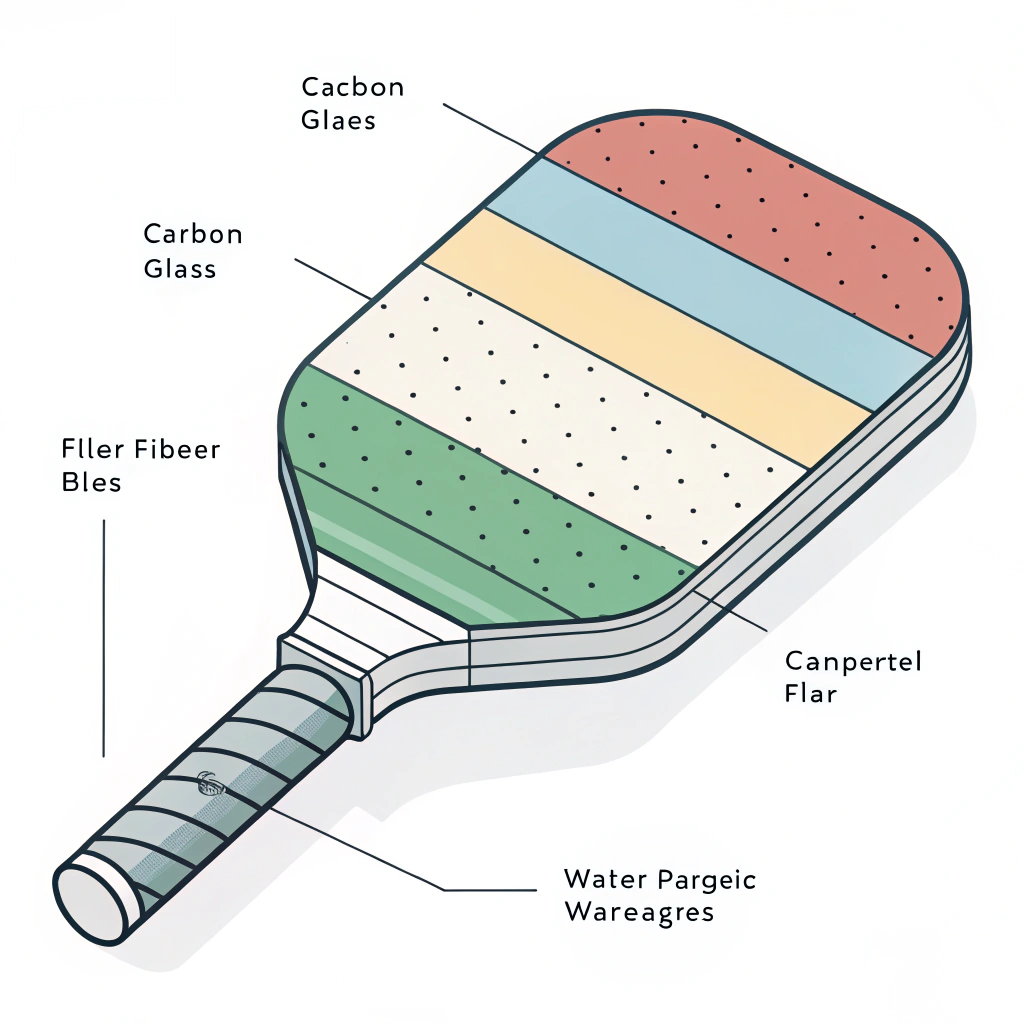Pickleball rallies refer to the continuous exchange of shots—from the serve until the rally ends—and they play a critical role in shaping game dynamics, strategy, and equipment performance. This quick answer sets the stage for understanding how rallies drive gameplay and influence every facet of pickleball.
A pickleball rally is the sequence of shots exchanged between players that begins with a serve and continues until the point is scored. During this period, the ball may be hit either before or after it bounces, which distinguishes the rally’s flow from other actions like a volley. A volley, by contrast, is a shot hit in the air before the ball bounces. By mastering rallies, players can control match momentum, optimize equipment usage, and fine-tune their competitive strategies.
Rallies are more than simple back-and-forth plays; they offer a window into the technical and tactical aspects of pickleball. Each shot executed during a rally contributes to the overall rhythm of the game. For B2B professionals—such as store managers, product trainers, and sports distributors—understanding these sequences helps them educate customers, align marketing strategies, and ultimately drive business decisions related to equipment performance.
In every rally, several key elements work in concert to drive the momentum of the gameplay. These components include:
• Serve: The starting shot that initiates the rally.
• Return: The opponent's response designed to neutralize the serve.
• Stroke Variety: Shots such as dinks, drives, and lobs used strategically during the rally.
• Shot Sequence: The order in which shots are executed, impacting the rally length and overall match flow.
• Rally Conclusion: A rally ends when a fault occurs, such as hitting the ball out-of-bounds, bouncing twice on one side, or committing a kitchen violation1.
A detailed breakdown of these components offers valuable insights:
| Component | Description | Impact on Game |
|---|---|---|
| Serve | Initiates the rally; requires precision and power. | Sets the pace; can provide tactical advantage. |
| Return | Response to the serve; demands quick reaction and proper positioning. | Neutralizes threat, builds momentum. |
| Stroke Variety | Includes dinks (soft shots), drives (powerful shots), and lobs (high arcs). | Keeps opponents guessing; controls pace. |
| Shot Sequence | The order of executed shots from start to finish. | Influences rally length and game rhythm. |
| Rally Conclusion | Occurs due to faults or winning shots. | Determines point allocation and match flow. |
Understanding these core elements is critical for analyzing gameplay and designing training modules for players. They serve as a foundation for evaluating paddle performance and material suitability in different competitive scenarios.
The paddle used in pickleball is engineered to enhance various aspects of a rally, including ball control, shot power, and player's comfort. At NEX Pickleball, our focus on high-performance paddles means that our products are evaluated based on how well they support a controlled and dynamic rally. Key factors include:
-
Material Composition:
- Carbon Fiber: Variants like 3K Carbon Fiber2, 12K Carbon Fiber, and T300 Carbon Fiber are known for their strength, flexibility, and excellent vibration damping. Higher thread density fibers like 12K provide a smoother surface for more controlled shots, especially important during fast-paced rallies.
- Fiberglass: Offers superior balance between power and control due to its elasticity, which is essential for maintaining the precision of prolonged rallies.
- Composite Materials3: Combining carbon fiber with fiberglass maximizes the benefits of both, creating paddles that are simultaneously light and exceptionally strong for rapid shot exchanges during rallies.
-
Core Materials:
- Nomex Honeycomb Core4, Aluminum Honeycomb Core, and Polymer Honeycomb Core each provide unique advantages, such as enhanced shock absorption or balanced weight distribution, directly affecting how effectively a player can sustain a rally.
-
Processing Techniques:
- Hot Pressing, Cold Pressing, and Thermoforming5: These advanced manufacturing processes help maintain structural integrity and precise weight distribution, ensuring that the paddle performs consistently during rallies.
Below is a simplified assessment table summarizing the relationship between paddle material, core technology, and their impact on rally performance:
| Material/Process | Impact on Rally | Key Benefit |
|---|---|---|
| 3K, 12K, T300 Carbon Fiber | Provides high rebound force ideal for aggressive play. | Enhanced power and reduced vibration. |
| E-Glass Fiberglass | Offers enhanced ball control with a wider sweet spot. | Greater flexibility and control. |
| Bamboo Core Composite | Light weight with high impact resistance, crucial for long rallies. | Clear shot feel and prolonged durability. |
| Hot Pressing | Produces strong, durable paddles suitable for high-impact rallies. | Ensured strength and impact resistance. |
| Cold Pressing | Results in paddles with precise control over thickness and feel. | Better control and shot responsiveness. |
| Thermoforming | Allows intricate design and stability, important for complex shot sequences. | Stability and precise material distribution. |
For sports professionals, the choice of equipment is as critical as strategy in shaping rally outcomes. Selecting a paddle that complements rally dynamics can lead to better performance under competitive conditions, making it easier to educate customers about the tangible benefits of our products.
A well-executed rally not only accumulates points but also sets the stage for broader tactical plays within a match. Here’s how effective rally management plays a role in competitive play:
Longer rallies often stabilize game rhythm and build stamina. They challenge players' concentration and physical endurance, and the paddle's performance is crucial in mitigating fatigue through efficient energy transfer and shock absorption. A longer rally sequence also offers more teaching moments for coaches to emphasize subtleties in ball placement and stroke timing.
Players deploy different shot strategies during rallies—like dinks, drives, and lobs—to control the ball’s trajectory and force errors in their opponents' responses. The ability to adjust shot type during a rally is linked directly to the speed and rebound characteristics of the paddle. For instance, paddles built with high-density materials can better absorb the energy of a drive, resulting in a less jarring experience during extended exchanges.
The structured design of high-performance paddles ensures better ball control and surface texture, which directly influences the fluidity of rallies. An optimally designed paddle offers a firm grip on the ball, reduces vibration through innovative core materials, and enhances precision even during rapid shot transitions. This improved control is especially vital during prolonged rallies, where even minor inaccuracies can lead to losing critical points.
The dynamics of a rally are core to understanding overall match performance. Consider the following aspects that underline the significance of rallies:
• Mental and Physical Endurance: Every rally tests a player’s focus and physical stamina. In high-stakes matches, the ability to maintain concentration through lengthy rallies often determines victory.
• In-game Adjustments: Coaches and players are constantly analyzing the pace and strength of rallies to refine strategies. This iterative process of adjustment is essential for leveraging opponents' weaknesses and maximizing strengths.
• Customer Education and Training: For sports industry professionals, explaining the nuances of rallies is key to marketing and educating consumers. Demonstrating how equipment choices affect rally outcomes can significantly influence purchasing behaviors and brand loyalty.
• Measuring Equipment Performance: The consistent quality control and precision in paddle manufacturing are tested under rally conditions. Our advanced production techniques—hot pressing, cold pressing, and thermoforming—ensure that every paddle can withstand the rigors of competitive rallies.
Overall, effective rally management is not only a measure of skill but also a testament to the quality and design of the equipment. It becomes a critical selling point for B2B decision-makers who are considering our products for their retail or training programs.
For industry professionals, the detailed understanding of pickleball rallies goes beyond game strategy—it becomes a tool for business growth. Here are some actionable suggestions:
-
Training Programs:
Equip your coaching staff with technical insights into rally dynamics. Implement training modules that leverage our technical specifications and production process details to highlight why certain paddle materials perform better during rallies. -
In-store Education:
Use real-game videos and demonstrations that explain the role of rallies in match dynamics. This approach helps customers visualize how product features translate into tangible performance improvements on the court. -
Product Positioning:
Highlight the competitive advantages of our paddles—such as superior shock absorption, precise weight distribution, and optimal ball control—in your marketing materials and sales pitches. Reinforce these points with data on production techniques and material benefits. -
Strategic Partnerships:
Collaborate with pickleball organizations and training camps to host clinics focused on rally strategies. This not only builds brand credibility but also provides a platform for direct customer feedback and product refinement.
Incorporating these strategies not only enhances product understanding among your clientele but also builds trust and loyalty towards your brand. When customers clearly see the link between how a paddle performs during rallies and overall match success, they are much more likely to invest in products that promise real, measurable benefits.
A deep understanding of pickleball rallies is essential for anyone involved in the sport—from players to distributors. By dissecting what makes a rally, examining the role of equipment technology, and exploring strategic implications, we empower you to make informed decisions. Whether you are educating your team or advising your customers, leveraging these insights can enhance gameplay strategies and product positioning alike. Remember, every rally is a blend of skill, strategy, and the right equipment—a winning combination that drives success on and off the court.
• What’s the difference between a rally and a volley in pickleball?
A rally is defined as the continuous exchange of shots starting from the serve until a point is scored, irrespective of whether the ball bounces or is hit in the air. In contrast, a volley specifically refers to a shot that is hit before the ball bounces.
• How do you rally score in pickleball?
In rally scoring for doubles play, a point is awarded at the end of every rally, whether the serving team or the receiving team wins the point. This format allows serving from both sides of the court and mandates that the winning team secure a two-point margin to claim victory.
• What are the 3 common ways to lose a rally in pickleball?
Rallies are most commonly lost when players hit the ball out-of-bounds, allow the ball to bounce twice on their side before returning it, or commit kitchen violations.
-
kitchen violation: Gain insight into the rules of pickleball, including what constitutes a kitchen violation and its impact on rally outcomes. ↩ ↩
-
3K Carbon Fiber: Read the article to understand the benefits and manufacturing processes of 3K Carbon Fiber, including its vibration damping and performance advantages in competitive play. ↩ ↩
-
Composite Materials: Explore the advantages of composite materials in paddle manufacturing, combining the strengths of carbon fiber and fiberglass for superior performance. ↩ ↩
-
Nomex Honeycomb Core: Discover how Nomex Honeycomb Core technology enhances shock absorption and weight distribution for optimized equipment performance. ↩ ↩
-
Thermoforming: Learn about thermoforming techniques used in paddle production and how they contribute to precise material distribution and stability. ↩ ↩







